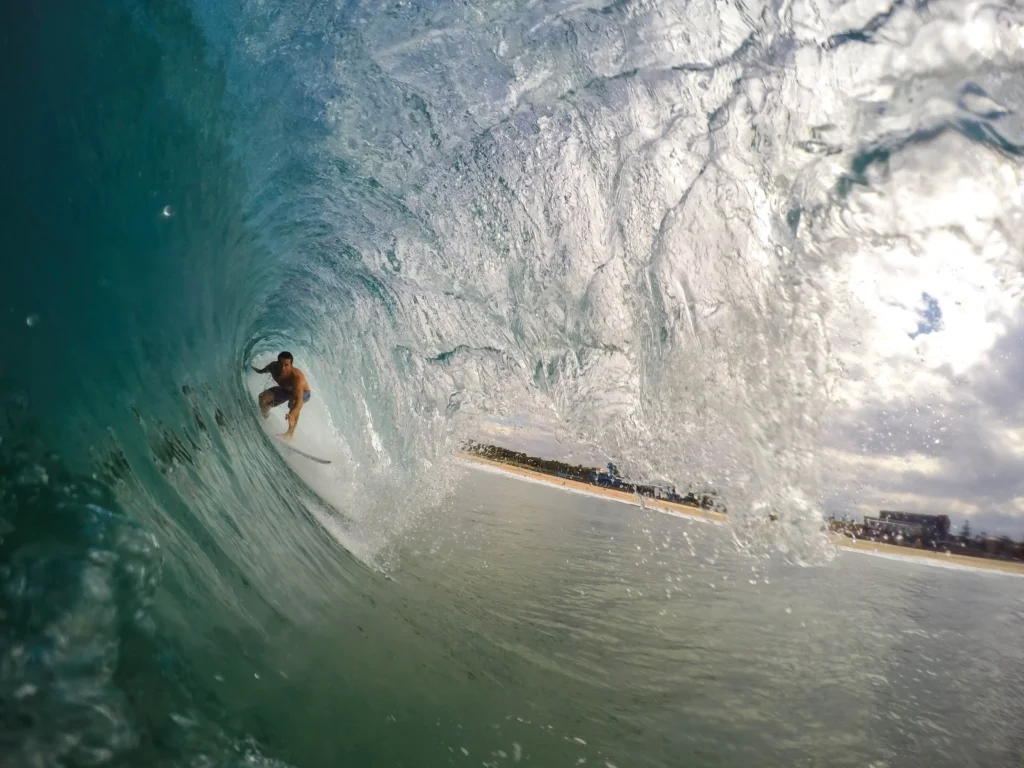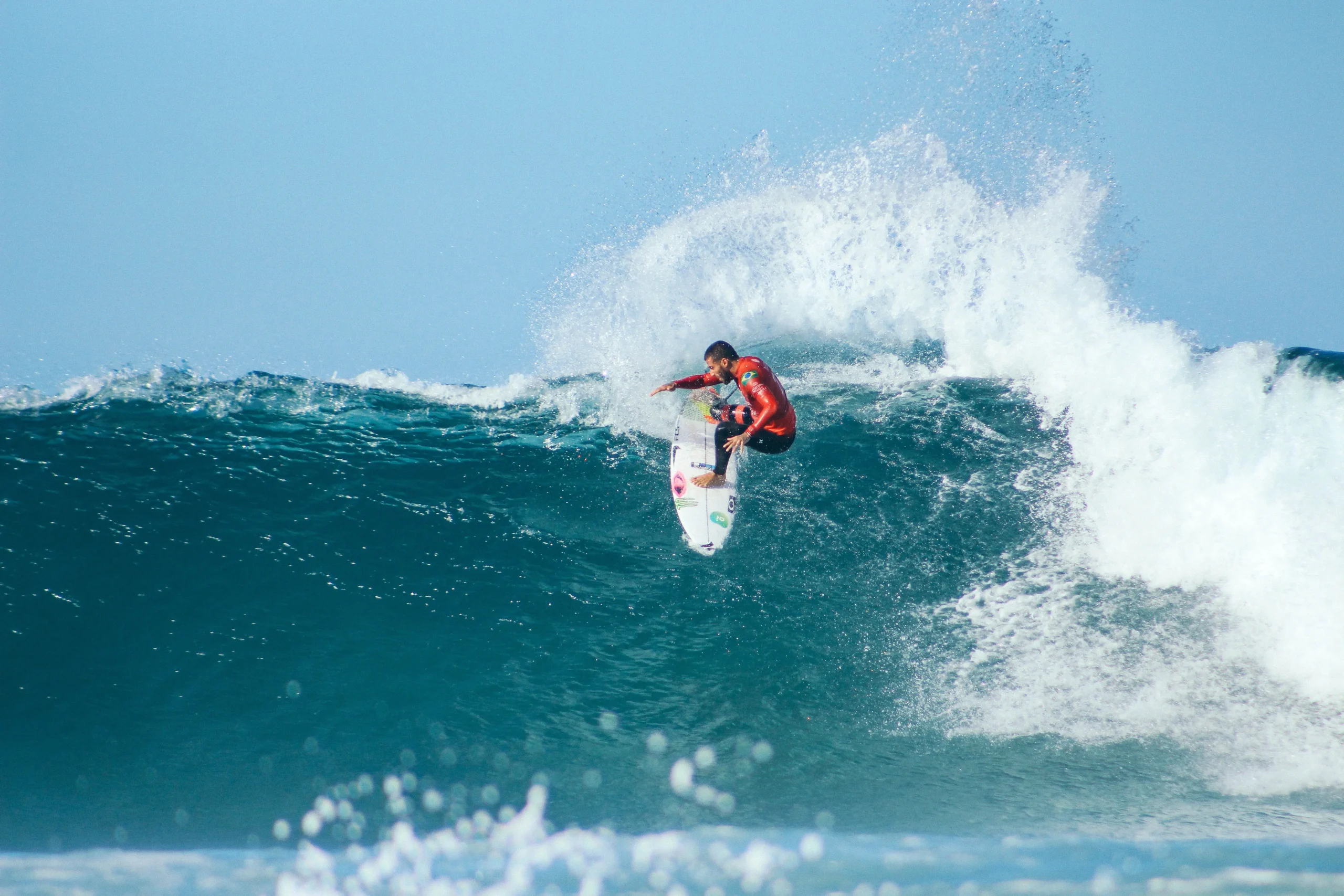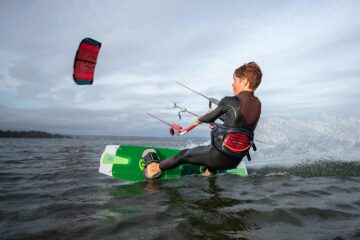Anyone tuning into surf culture quickly encounters the term “kook” thrown around about beginners. While often used pejoratively, this label highlights an underlying frustration many have with surf etiquette. So what exactly defines a kook in surfing circles?
A kook refers to an inexperienced or unskilled surfer who violates lineup conduct and right-of-way rules. Behaving dangerously or discourteously earns newcomers this derogatory designation from veterans.
Learn more about kook behaviors that inspire backlash along with tips for avoiding this label as you progress in surfing and integrate into lineups.
Characteristics of a Kook
Surfing, with its graceful glides and sun-kissed appeal, might seem deceptively simple. But beneath the surface lies a complex culture steeped in etiquette and technique. Enter the infamous “kook,” a surfer whose moves – or lack thereof – scream “newbie” (and not the endearing kind). Here’s a crash course on spotting kooky behavior, delivered straight from the lineup:
Etiquette Blunders:
- Right of Way Roulette: Kooks often play a twisted game of chicken with wave priority. Ignoring the “pecking order” of the lineup, they snag waves meant for others, leading to angry stares and the occasional wipeout.
- Dropping In Disasters: Imagine cutting in line at a theme park with the potential for a saltwater collision. Dropping in, claiming an occupied wave is a kook classic, guaranteed to ruffle feathers and raise hackles.
Boardroom Blunders:
- Paddling Perils: Kooks paddle like penguins in a mosh pit – erratic, inefficient, and ultimately exhausting. They struggle to catch waves, leaving them frustrated and everyone else bemused.
- Board Ballet Gone Wrong: Imagine juggling chainsaws on a tightrope. That’s what a kook’s board handling often looks like. Wobbly turns, nosedives, and general clumsiness are their signature moves.
Poor wave selection:
- Size Misconception: Kooks have a peculiar talent for mistaking ripples for rogue giants. They paddle out in conditions beyond their skill level, setting themselves up for a watery (and potentially painful) reality check.
- Wave Selection Shenanigans: Kooks chase waves like moths to a flame, often oblivious to the quality or potential dangers. They paddle for anything that moves, even if it means paddling straight into a wall of whitewater.
Remember, calling someone a kook isn’t about bashing beginners. It’s about highlighting the importance of respecting the ocean, fellow surfers, and the unwritten rules of the lineup. So, next time you’re paddling out, keep an eye out for these kooky clues.

Common Mistakes Made by Kooks
Knowing these mistakes is essential for anyone starting their surfing journey. Let’s go into the details of these errors in an easy-to-read and credible manner.
In-Depth Analysis:
Paddling out at crowded breaks without experience
- Mistake: Novice surfers often venture into crowded surf breaks without the necessary skills.
- Consequence: Crowded lineups can be overwhelming and dangerous for inexperienced surfers.
- Solution: Beginners should start at less crowded spots and gradually work their way up to busier breaks as their skills improve.
Ignoring local surf etiquette
- Mistake: Failing to respect local surf etiquette can lead to conflicts in the water.
- Consequence: Ignoring rules such as right of way can result in accidents and a bad reputation among fellow surfers.
- Solution: Research and follow the specific surf etiquette of each surf spot to maintain a positive surfing experience.
Struggling with wave entry and positioning
- Mistake: Beginners often have difficulty paddling into waves and positioning themselves correctly.
- Consequence: Poor wave entry and positioning make catching waves challenging and maintaining balance.
- Solution: Practice paddling and positioning skills in calm waters and gradually progress to smaller waves.
Failing to read and react to the ocean’s dynamics
- Mistake: Kooks may not understand how to read the ocean, including identifying rip currents and changing conditions.
- Consequence: Lack of ocean knowledge can lead to dangerous situations and getting caught in currents.
- Solution: Learn about local ocean conditions, tidal changes, and how to identify rip currents to stay safe.
Choosing the wrong surfboard for their skill level
- Mistake: Beginners often select surfboards that are too advanced or too small for their abilities.
- Consequence: The wrong surfboard can make it difficult to paddle, catch waves, and progress.
- Solution: Consult with experienced surfers or instructors to choose an appropriate surfboard for your skill level.
By avoiding these errors and gradually improving their skills and knowledge.

How to Avoid Being a Kook?
Here’s how to avoid the dreaded “kook” label and surf like a seasoned pro:
1. Seek Guidance:
Surfing isn’t just about balance – it’s about understanding the ocean and respecting its power. Lessons from experienced instructors will equip you with essential safety skills, proper paddling techniques, and wave-riding know-how.
2. Observe and Learn:
Watch experienced surfers. See how they paddle, position themselves, and ride the waves. Mimic their moves and learn from their mistakes (without wiping out yourself, of course!).
Ask questions politely – most surfers are happy to share their knowledge with stoked newcomers.
3. Start Small, Progress Gradually:
Don’t paddle straight into monster waves your first day. Start on gentle slopes with beginner-friendly boards, building your confidence and skills before tackling bigger swells.
4. Practice Makes Perfect:
Hit the beach often and hone your paddling and board-handling skills. The more comfortable you are in the water, the smoother your surfing will be. Bonus points for practicing pop-ups and basic maneuvers on dry land before hitting the waves.
5. Be a Wave Watcher, Not a Wave Hog:
Learn to read the waves and understand their power. Don’t just paddle for anything that moves. Respect the right of way – surfers closer to the peak of the wave have priority.
Bonus Tip: Ditch the “kooky” accessories like oversized rashguards and bright neon wetsuits. Opt for functional gear that blends in and lets your surfing do the talking.
Kook vs. Beginner: Understanding the Difference
Not all beginners in surfing are kooks. This is a key point to understand when diving into the surfing world. Let’s explore how attitude and awareness set beginners and kooks apart.
- Beginners: They are new to surfing, eager to learn, and respectful of the culture. Beginners might make mistakes, but they show a willingness to improve and understand the sport’s etiquette.
- Kooks: Often, kooks overestimate their abilities. They might ignore surfing etiquette and show a lack of awareness about their surroundings. This behavior can lead to unsafe situations and disrespect towards other surfers.
FAQs
How do you spot a kook surfing?
A kook in surfing is often spotted by poor etiquette, overconfidence, inappropriate gear, and a lack of wave awareness.
What is a kook in beach slang?
In beach slang, a kook is someone who tries to fit into the surfing scene but lacks skill, style, or etiquette.
Bottom Line
Knowing what a kook is in surfing helps foster respect for the sport’s culture and safety.
By learning from experienced surfers, respecting etiquette, and choosing appropriate gear and waves, beginners can avoid being labeled as kooks. Embracing humility and a willingness to learn are key to a rewarding surfing journey.




